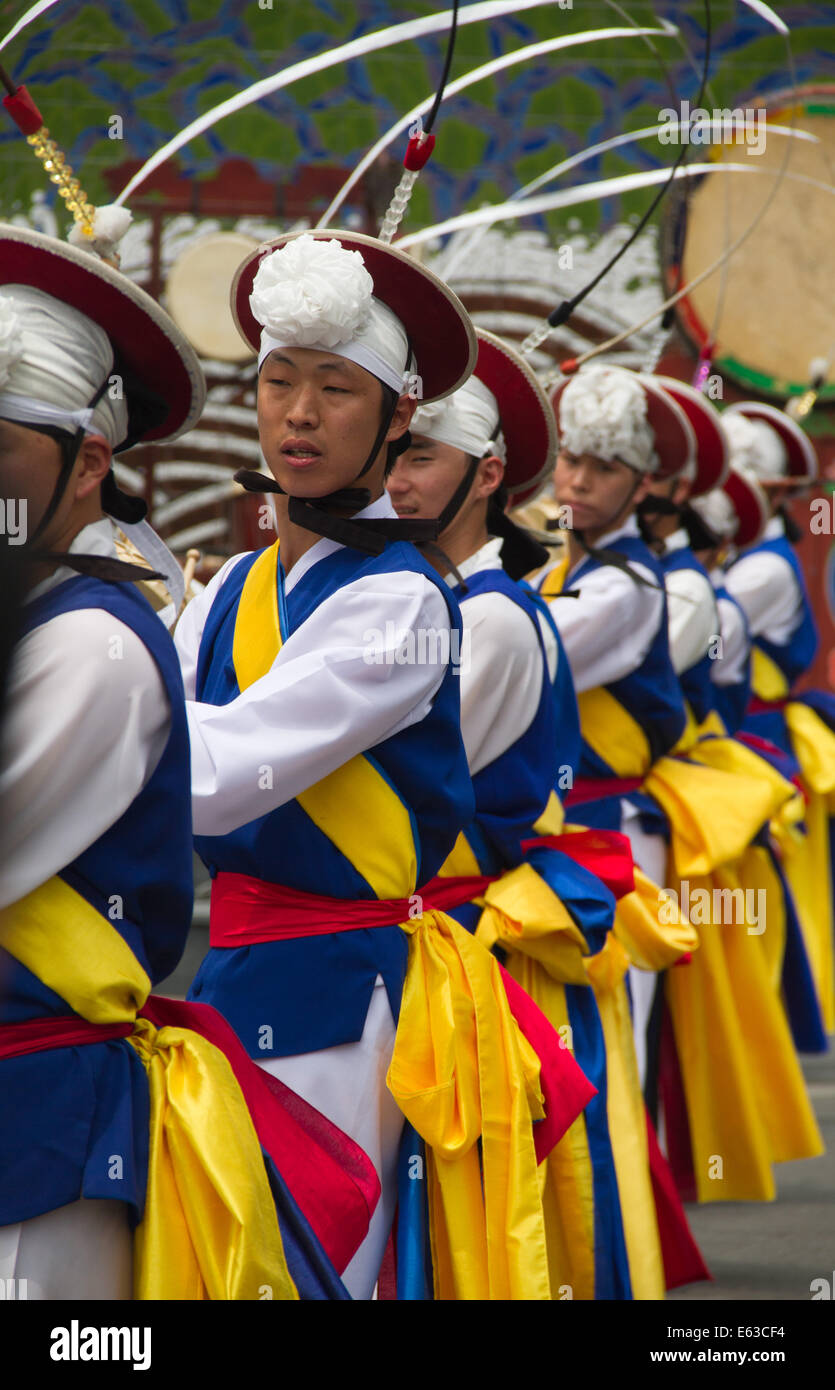Pungmul is a Korean folk music tradition that includes drumming, dancing, and singing. Most performances are outside

Image details
Contributor:
James R Gibson / Alamy Stock PhotoImage ID:
E63CF4File size:
49.4 MB (1.6 MB Compressed download)Releases:
Model - no | Property - noDo I need a release?Dimensions:
3331 x 5184 px | 28.2 x 43.9 cm | 11.1 x 17.3 inches | 300dpiDate taken:
20 July 2014Location:
South KoreaMore information:
Pungmul (Hangul: 풍물; Hanja: 風物 IPA: [pʰuːŋmul] poong-muul) is a Korean folk music tradition that includes drumming, dancing, and singing. Most performances are outside, with dozens of players, all in constant motion. Pungmul is rooted in the dure (collective labor) farming culture. It was originally played as part of farm work, on rural holidays, at other village community-building events, and to accompany shamanistic rituals, mask dance dramas, and other types of performance. During the late 1960s and 1970s it expanded in meaning and was actively used in political protest during the pro-democracy movement, although today it is most often seen as a performing art. Older scholars often describe this tradition as nongak ([noŋak] nong-ahk), a term meaning "farmers' music" whose usage arose during the colonial era (1910–45). The Cultural Heritage Administration of South Korea uses this term in designating the folk tradition as an Important Intangible Cultural Property. Opposition from performers and scholars toward its usage grew in the 1980s because colonial authorities attempted to limit the activity to farmers in order to suppress its use and meaning among the colonized. It is also known by many synonymous names throughout the peninsula. Drumming is the central element of pungmul. Each group is led by a kkwaenggwari (RR- ggwaenggwari) (small handheld gong) player, and includes at least one person playing janggu (hourglass drum), buk (barrel drum), and jing (gong). Wind instruments (taepyeongso, also known as hojeok, senap, or nalari, and nabal) sometimes play along with the drummers. Following the drummers are dancers, who often play the sogo (a small drum without enough resonance to contribute to the soundscape significantly) and tend to have more elaborate—even acrobatic—choreography, particularly if the sogo-wielding dancers also manipulate the sangmo ribbon-hats. In some regional pungmul types, japsaek (actors) dressed as caricatures of traditional village rol